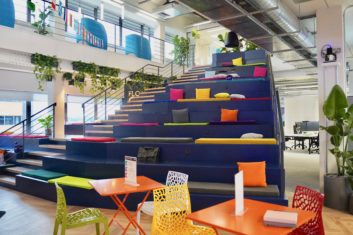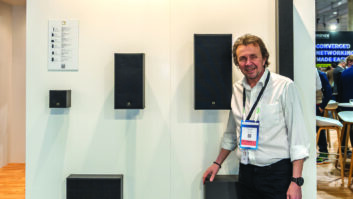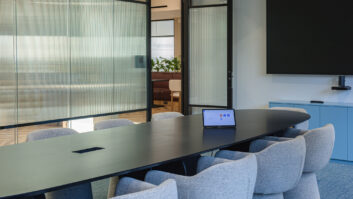Many things changed during the Covid-19 pandemic, including how and where people work. The long-established model of working in an office alongside others, with the commuting involved in that, disappeared almost overnight. It was replaced by home working and staff communicating with each other using video conferencing platforms with basic home setups.
Audiologic was able to provide the solutions for clients who found themselves having to change not just their way of working, but how everyone within the company could communicate. Now that staff have returned to offices, Audiologic is seeing the whole concept of where and how work is completed evolve.
 “One of the biggest trends we’re seeing is the need for flexibility within working environments,” comments Ben Spurgeon, Audiologic’s senior technical manager. “Part of what we’re seeing is the use of large-scale video conferencing spaces, in rooms that typically wouldn’t be considered for this use case. Traditional communication environments such as lecture theatres, court rooms and auditoriums are now also making use of VC platforms but require an AV system far greater than that of the small-scale spaces. Keeping intimacy and involvement in these larger spaces is key, creating a shared experience for all those in the
“One of the biggest trends we’re seeing is the need for flexibility within working environments,” comments Ben Spurgeon, Audiologic’s senior technical manager. “Part of what we’re seeing is the use of large-scale video conferencing spaces, in rooms that typically wouldn’t be considered for this use case. Traditional communication environments such as lecture theatres, court rooms and auditoriums are now also making use of VC platforms but require an AV system far greater than that of the small-scale spaces. Keeping intimacy and involvement in these larger spaces is key, creating a shared experience for all those in the
room and joining remotely.”
COST CONSIDERATIONS
Being unable to travel, combined with the instantaneous connectivity offered by modern video conferencing systems, has made companies seriously reconsider the cost and time involved in the previous way of doing international business, not to mention the environmental impact. “The investment in technology for high-value meeting spaces is justified now more than ever,” he comments. “The time savings, efficiency and collaboration benefits are all supported by the AV technology.”
The attitude towards how a conference room or boardroom is used has also changed, with Spurgeon observing that there has been a large shift towards ‘divisible spaces’. “Committing a single space, especially a large-scale room, to have only one function is now recognised by companies as very costly and, quite often, wasteful.” he says. “The majority of large spaces we’re designing are now double, triple or quadruple divisible areas that can be split into smaller meeting or breakout rooms. By adding in the divisible partitions and supporting tech, this allows you to change the structures and the format of the spaces, giving you greater flexibility and return on investment.”
On the technical side of these new working spaces, Spurgeon notes that there is now greater recognition of the need for high quality audio. “One of the biggest products for us remains the beam-forming array microphone,” he says. “This allows unobtrusive, high quality audio performance without the need to individually mic participants.”
This, and other technologies, are available to Ben Spurgeon and the Audiologic system design team. But, this does not mean any two systems are the same: “Every single system design is unique, particularly when we get into high- value theatres, government premises and higher education facilities. We provide custom solutions based on the requirements of the client, utilising the latest in AV technology to adapt to the future of the workspace.”







